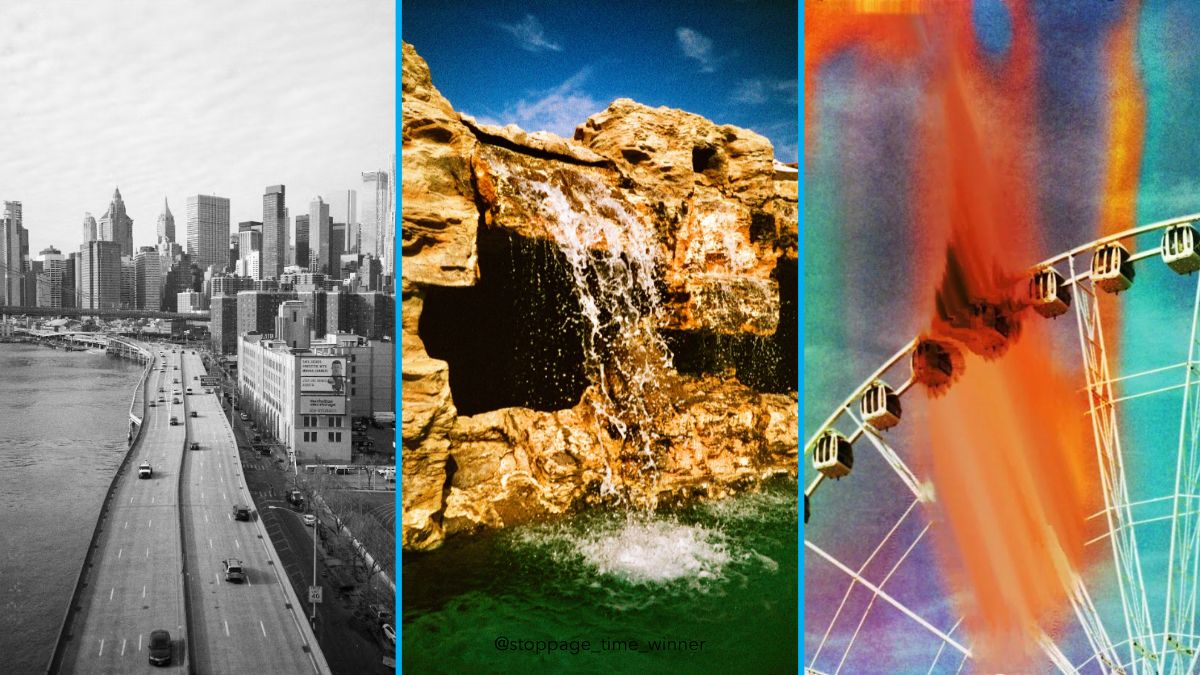Black Friday 2025 has landed at Analogue Wonderland, bringing some of our biggest film photography deals of the year - from discounted film and cameras to money-saving WonderLab processing offers, exclusive bundles, and festive specials available for a limited time only. Grab a great deal while stocks last!
Recent posts
Shop the article

Film Photography Today: Innovations and Trends You Need to Know
By Paul McKay
This article is adapted from a talk I was asked to give to the Royal Photographic Society in July 2024. The subject: the modern world of film photography, showcasing some of the incredible innovations and films that have been launched in recent years. Enjoy!
Analogue revival
The Royal Photographic Society was founded in 1853. Interestingly this was still 26 years before Ilford began! The first meeting in January of that year invited 'ladies and gentlemen interested in Photography' to come together and set up the necessary structure for a formal society - and it quickly progressed to holding regular talks, exhibitions, and publishing journals.
At the time one of the biggest issues in photography was patent law. Specifically whether amateurs displaying their work in the United Kingdom were violating William Henry Fox Talbot's intellectual property regarding calotypes. This was particularly challenging as calotype photography was the most flexible and simplest image-making process of the time.

William Henry Fox Talbot - holder of both lenses and patents
Nearly two hundred years later and creative photographers have a plethora of options for creating images - both analogue and digital - and very rarely does an amateur photographer have to worry about patent law! But the challenges of bringing a visual scene to life in physical form continues to be a source of enjoyment and curiosity for photographers of all ages.
The digital revolution promised a world without chemistry, with endless easy choices, and the best photography you could ever create. The reality has not been that simple, and there is a growing trend of photographers deciding that they have plenty of reasons to shoot film instead.
The classic film look
My working title for this talk was 'Beyond FP4'. Why have I singled out Ilford FP4? First let me be clear - I have nothing against that film! It's a wonderful black and white emulsion, and one of my favourites for everyday shooting in good light.
But I chose it as an example of the look that most people think of when you say 'film photography'. The timeless, monochromatic, detailed photos that recalls historic images from down the ages.

Most people who learned photography in school or college will have gone down a similar path: the basics of composition, how a camera works, the exposure triangle, and then into the darkroom with a roll of black and white film!
And for many folk this remains the appeal of analogue photography - a classic look, a classic process, and with a print as the end result.
Type of film
There are three ‘main’ types of film - and a few others that I’ll come to later.
The three main types are:
- Black and white, as previously discussed. They give beautiful monochrome images, you can develop easily at home or with your local film lab, and produce prints on photographic paper.
- Colour negative film. Also known as ‘print film’ these are colour films that are developed in C-41 chemistry kits and produce a negative image on the roll of developed film. Very common, affordable, and with a fantastic range of different looks.
- Colour slide film. The typical emulsion that you use to make slideshows - when developed in E6 chemistry these films produce colour positive images i.e. you can see exactly what was captured on the developed roll.
Then the outliers you might come across include Ilford XP2 (a black and white film that is processed in C-41 chemistry), black and white slide film (developed in speciality chemistry), and Kodak Vision films that are processed in ECN-2 chemistry.

From left to right: black and white, colour negative, colour slide, and colour negative once more
You can also cross-process films, which means using a different chemistry than recommended but which still gives a usable developed image. For example developing Kodak Vision films in C-41, developing colour negative films in E6 etc
New products for modern film shooters
Now that we’ve covered the basics of film type we have the language and understanding to look at some recent films that have been launched by our friends around the world!
Lomography have a wonderful range of creative colour negative films under their ‘LomoChrome film’ umbrella. This includes the likes of LomoChrome Purple and Turquoise with incredible alien colour shifts, LomoChrome Metropolis with gorgeous muted colours and high contrast - available across 35mm, 120 and 110 formats.

They recently launched Colour ‘92 and I can guarantee will have more plans up their sleeves!
Kodak surprised the world in 2018 by bringing Ektachrome 35mm back from retirement - following up with the 120 and then Gold in 120 since.
Ilford and Kentmere films are actually made by a UK company called Harman - still based on the same Cheshire site that has made films since the early 20th century - and they created and launched their own colour film called Harman Phoenix in December 2023. It then arrived in 120 format in September 2024. This is the first colour film that has ever been completely produced in the UK. The film itself has an unique look with strong halation and unusual colours that really come to life in bright sunlight.

One of my favourite Harman Phoenix photos: showing the interesting interaction with the bright light on the leaves and clouds - as well as the strong grain in the sky
We also have a longstanding relationship with revolog films who made their name ten years ago with their creative films: pre-exposed with light, electricity, and patterns to add an unpredictable splash to your photography shoot!
It would be remiss of me at this point to skip past all the new film cameras that have launched over the past year. How cameras influence the final image is the topic for another article - but looking at the sample photos from Reto’s Ultra Wide and Slim camera, the Lomography Sprocket Rocket, and of course the Pentax 17 film camera and you will quickly get an idea of the range of image-making available to modern film photographers!
What about souped film?
Souping films is when you leave an unexposed roll of film in a liquid concoction to give your photos an unpredictably interesting effect. You might have seen instruction manuals on Instagram or Tiktok. Typically it is something that you’d do yourself at home - with coffee, wine, saltwater, or anything else you fancy. Recently we’ve started working with Hanalogital who is working to standardise certain soup recipes so that the films are reliable in their unpredictability - it's an incredibly fun way of capturing scenes with a creative twist!
This brings serendipity to the party, and I have seen some mind-blowing photos as a result of the process. One important point on souped film: ALWAYS tell your film processing lab if your films have been souped! They will need to develop it separately to their usual machinery - some may charge extra for this, some may flatout refuse - so it’s worth understanding your options before you go down the souped road. If you’re here in the UK then we can develop souped films. We use our hand-developing kits to avoid cross contamination and that leads to some fantastic results!
Different black and white films
It isn’t just colour photographers that can enjoy a vast choice of film aesthetics. I’ve referenced Ilford FP4 as having a classic look - good detail, contrast, grain - but there are plenty of different results you can achieve while staying in the non-colour world.
Film Washi is the world’s smallest film manufacturer, and Lomig the owner creates wonderful 35mm and 120 emulsions from his tiny production site in France. He is most famous for his ‘W’ emulsion that is coated on Japanese Washi paper, allowing the texture of the paper to filter through to the final image. He also experiments with X-ray film, and other chemical emulsions that are selectively receptive to different types of light.
z
Washi F is a fluorographic film which gives the photos a wonderfully eerie look
If you have the opportunity to shoot a range of different black and white films then you will quickly start to learn which ones match your creative vision. Personally I have always loved Kodak Tri-X: it has higher grain and contrast than the technical films like Ilford Delta or Kodak T-Max, and that really appeals to me.
You might enjoy fine detail and tight grain - in which case you’ll be drawn to the professional films as well as high-silver emulsions like Ferrania P30 or Adox HR-50. Or you might enjoy dark and dramatic results - in which case you could pick up Cinestill BwXX. If you’re after softer photos with lower contrast then Fomapan might be your friend.
The full choice of camera films
We currently have 162 35mm films listed in our store, 99 medium format films, and over 100 others - that includes instant film, large format, movie film, miniature and sub-miniature, and glass plates. If you're returning to film after an extended time period out you may get a shock when you see what inflation has done to your favourite films (bring back 99p cones!) but don't worry: there are plenty of ways to shoot film in an affordable way that allows you to have tons of fun, creating excellent images.

A beautiful example of glass plate photography (c) @holga_pics
Which brings us nicely back to the start of the article and the history of film! Glass plate technology predated Talbot and his calotypes, so we’re in the wonderful situation at the moment where you can use technologies that date from 1850 alongside 2024.
If you're feeling overwhelmed by this choice then don't worry. Start with your creative vision: what do you WANT your photos to look like? What do you enjoy shooting (for me recently - a gig, or for Expired Film Club - sports!) And then find the film that matches that look 😊
If you find yourself a little stuck then head over to our Wall of Inspiration and I bet you'll be unstuck within minutes.
So - what do you think will be the next film you use?
Ready to dive in?
Keep Reading
View all
Christmas 2025: Shipping & Opening Hours
Christmas 2025 is fast approaching! To make sure your analogue goodies arrive in time, take note of our last shipping dates, plus opening and operating hours over the festive season. We've got everything you need to gift the magic of film photography this Christmas!

Film Photography Christmas Gift Guide 2025: Analogue Wonderland
Capture the magic of Christmas with film - no filters needed. Our 2025 Film Photography Christmas Gift Guide 2025 is packed with thoughtful presents for every type of shooter, from curious beginners to seasoned photographers. Discover film stocks, cameras, and creative accessories that will make this festive season truly memorable.
Subscribe to our newsletter 💌
Sign up for our newsletter to stay up to date on film photography news, sales and events:
Free Tracked Shipping
On all UK orders over £50
Passion For Film
An unbeatable range and an on-site lab
Our Customers Trust Us
Thousands of independent 5* reviews
All Deliveries are Carbon Neutral
Independently audited and verified by Planet
- Opens in a new window.








2 Comments -
EKa INtan • -
Sara Leigh Lewis •
Bagas31
Have used 35mm & 6×6 tri-x for over forty years
Wouldn’t choose anything else
Never got on with HP5